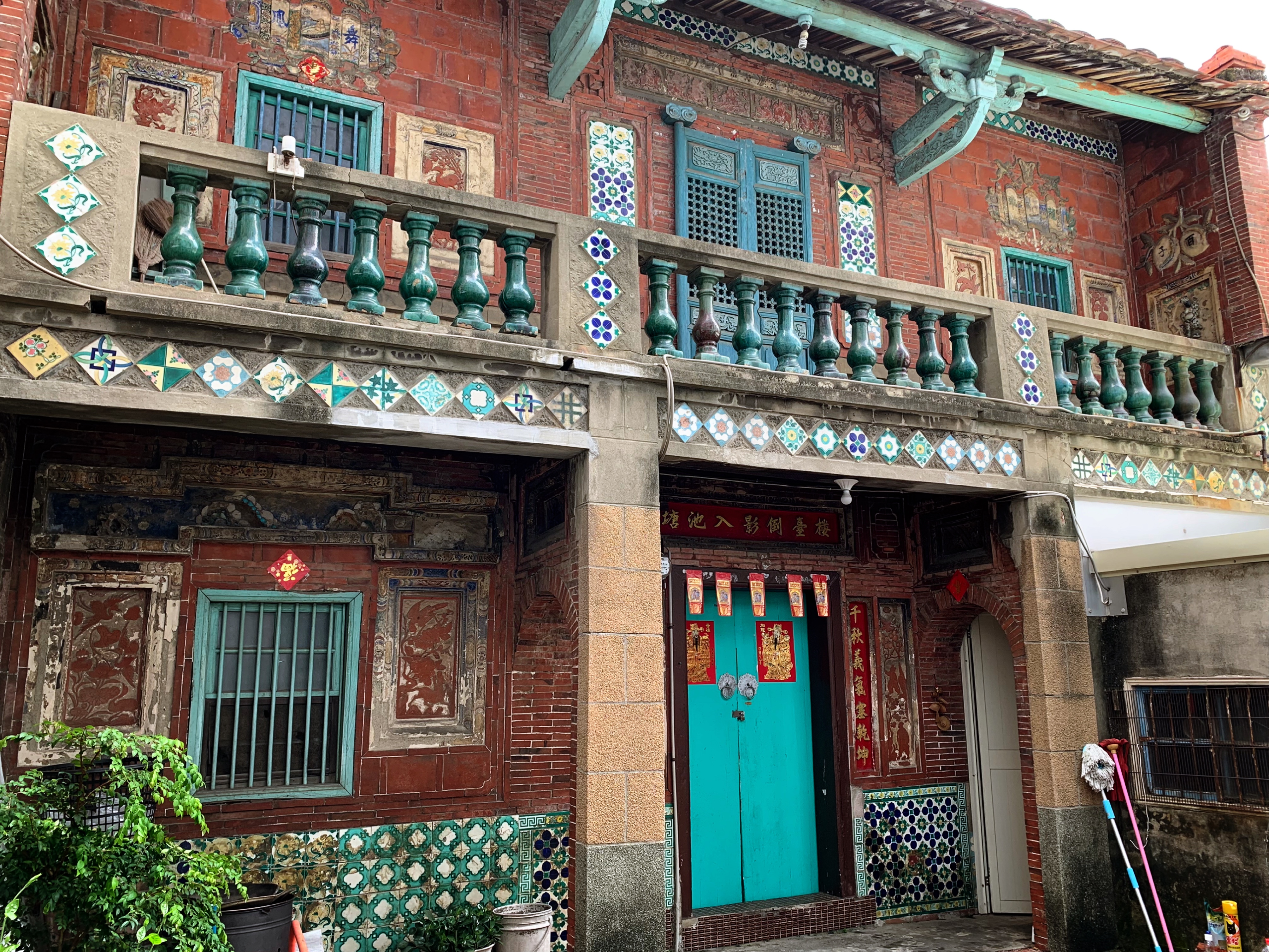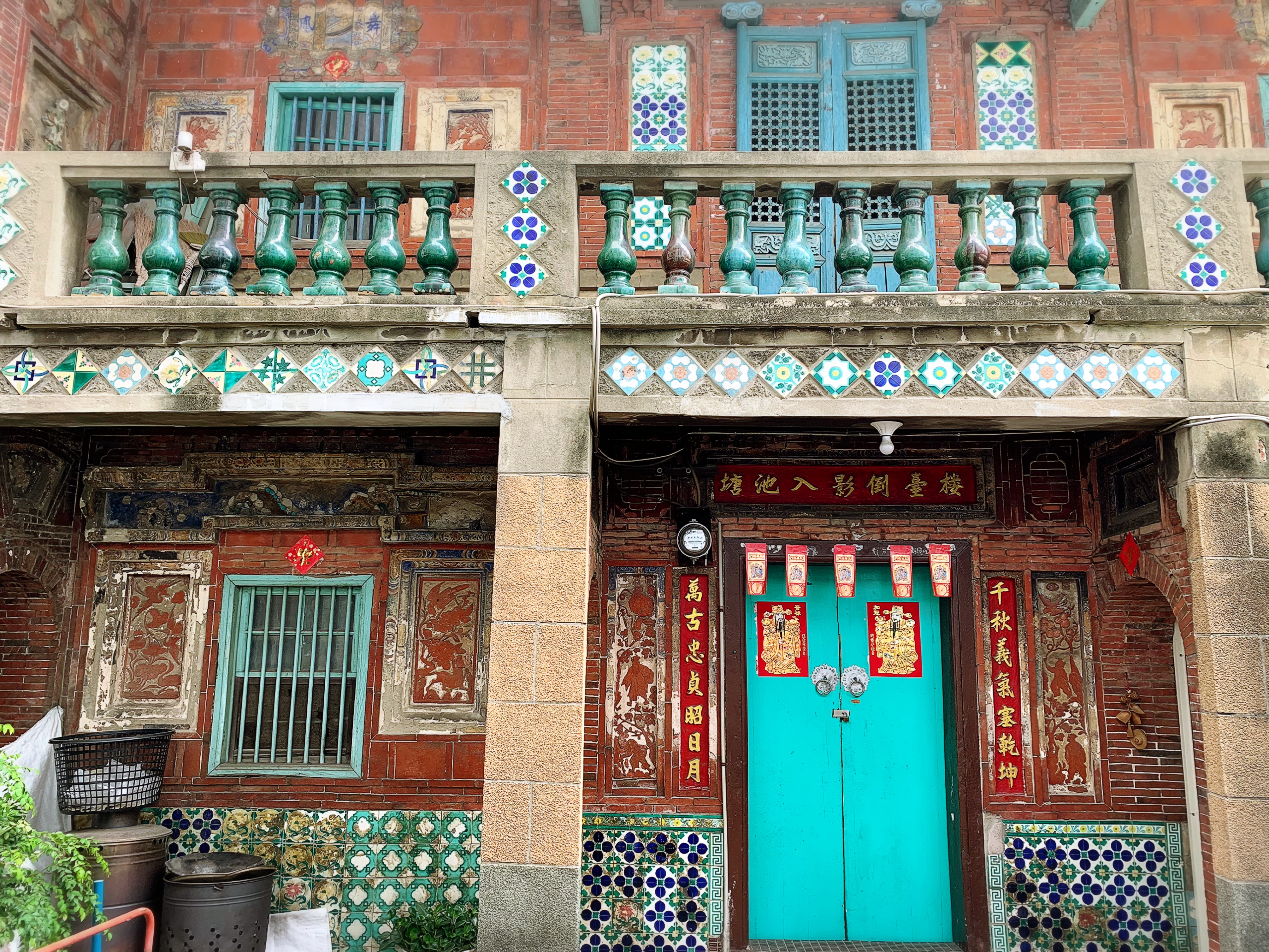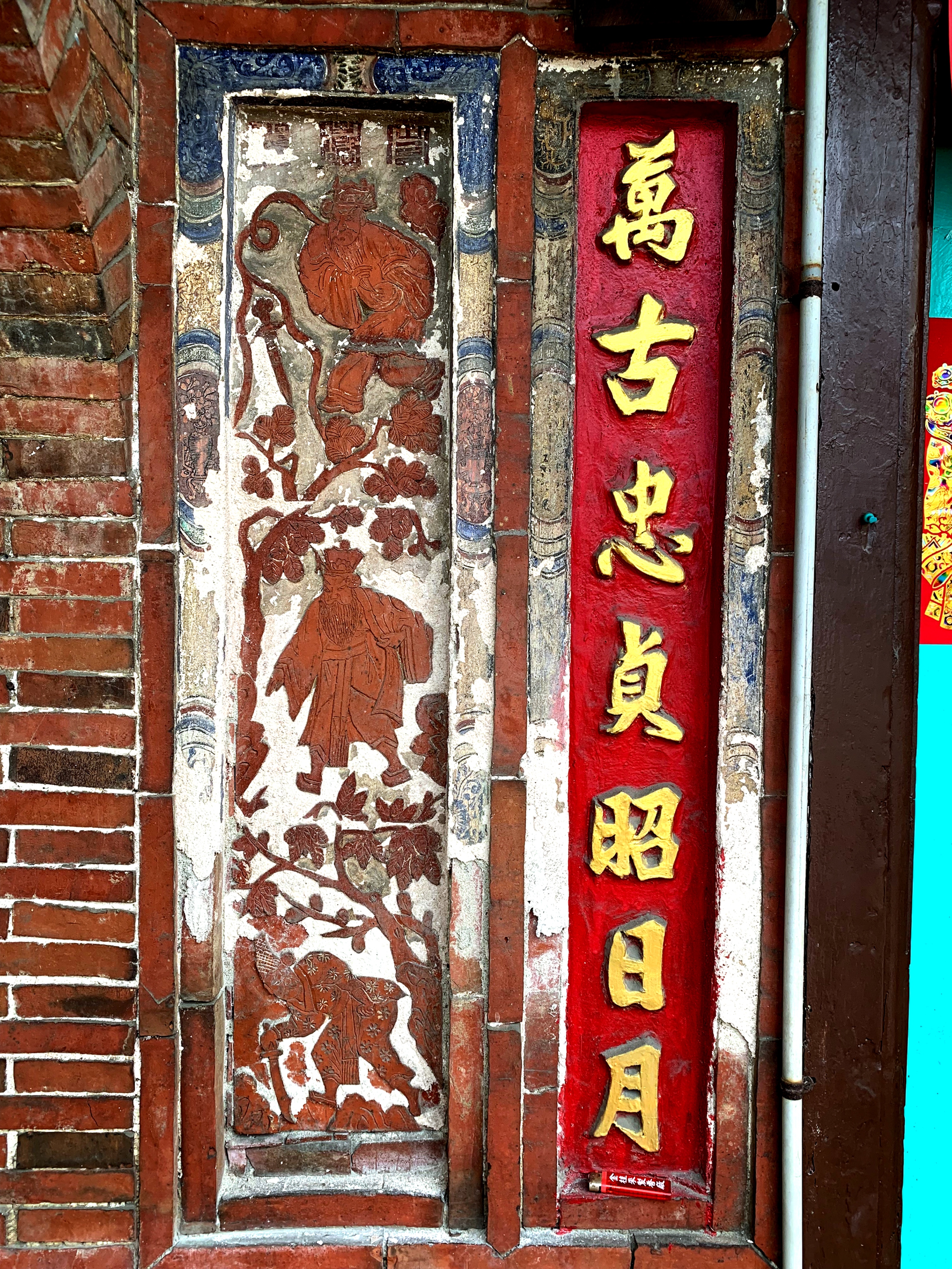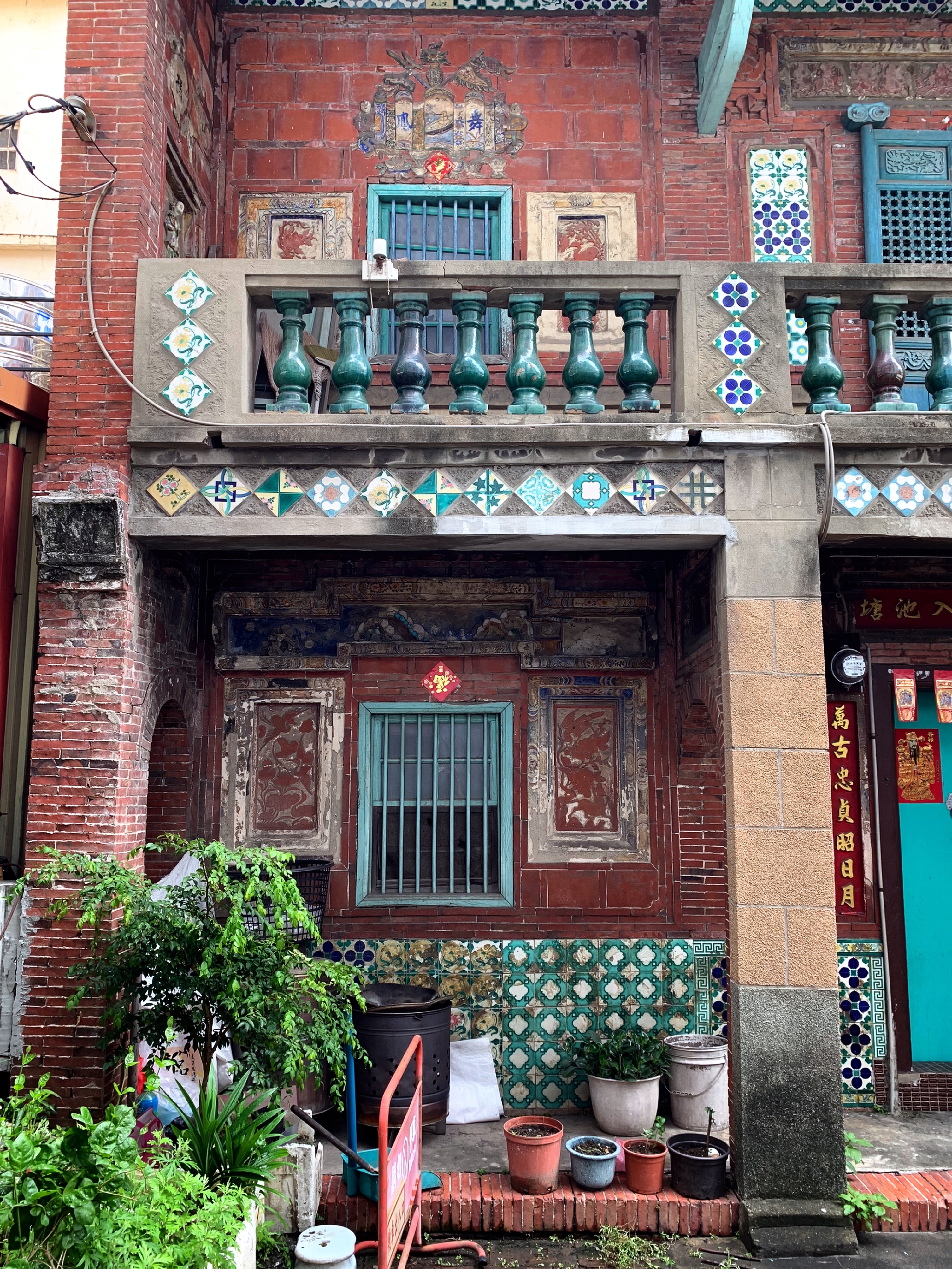
I haven't felt like commenting on current affairs this week; if I have nothing unique to say, I don't necessarily see the point of blogging for the sake of it.
But here's what I do want to talk about: Kaohsiung! I go for work a few times a year, and try to arrive early so I can meet up with friends and enjoy the city. Just before I got COVID -- and remained positive for a highly irritating 18 days -- I took one of these trips, stopping in Taichung on the way. In fact, that's probably how I got sick.
On this trip, I went out to Dashe (大社) to meet one of my oldest friends in Taiwan. She picked me up at Metropolitan Park station and we stopped at a well-regarded dumpling chain for lunch. Then, we decided to find the Hsu Family Mansion (許家古國). For a sleepy town, Dashe is packed with old farmhouses and mansions; in fact, it might be packed with them because it's sleepy: there's no particular reason to tear them down! You can read about some of these places here, although I haven't even been to every place I'd like to see in the area yet.
The Hsu house is notoriously hard to find. Despite being in downtown Dashe, in a lane but not far at all from a main road, my friend who actually lives in Dashe did not know where it was -- only that it existed. "It's like a secret garden," she said. Somewhere in the lanes in a more built-up part of the city, but we had no idea which lanes.
I had to find this place. I knew I wouldn't be the first. Local bloggers have been posting about it for ages. Ultimately, that's how I found it: a local blog with a picture of the correct lane marker. 
It turned out to be extremely easy once we knew the lane. It's very close to the intersection of Sanmin and Cuiping Roads (三民翠屏路口). The intersection itself is fairly interesting, with several Japanese-era buildings, and the temple (accessed by stairs or an elevator) is eye-catching, with some neat mid-century floor tile and a place to hang gold paper wishing papers that overlooks the road. It's dedicated to the Linshui Ladies, three women from Fuzhou who became Taoist priests and founded their own religious school (some say the term only refers to the oldest, Chen Jinggu). The large Japanese-era building next to it may be related to the Hsu family, and the smaller one across the street, now painted a creamy white, was once a hospital.
Head east on Cuiping Road and turn left at Lane 37, which is also the first lane you'll come across. Keep an eye out to your left until you see the roof of an old house peeking out over newer buildings. 
Technically, you have to cross private property to access the Hsu mansion. In reality, it's a tiny alley that winds past a few houses, and nobody really minds if you walk down it. The actual mansion and its courtyard are indeed private property, however. Someone now lives in the old mansion -- I'm not sure if she rents it or is a Hsu family descendant, and it seemed rude to ask -- and if she's home it's polite to ask if you can take a few photos. She said yes to us, and remarked that "foreigners" love to come here, implying she thought the whole thing was kind of overblown for just an old house. From all those blog links above, I am reasonably sure Taiwanese who enjoy hunting for heritage architecture come here more often, but I guess we big-noses stick out more. 

If you stop by and the resident is not there, it should be fine to take a few photos, but be respectful. It's someone's home. 


The Hsu mansion is an example of heritage arts where the artist matters more than the patron. Obviously, the Hsu family was prominent in Dashe; a Hsu was the chair of the Dashe Farmer's Association. The house was built in 1910, during the Japanese era, and isn't especially unique architecturally. What makes it stand out are the colorful Majolica tiles, the green glazed bottle railing on the second-floor balcony, and the outstanding brick carvings of Zhang Jiao (張叫).
The Zhangs of Dashe have been known as shadow puppet artists for generations, since one of their ancestors founded a troupe in Dashe over 200 years ago. They became quite famous in the 1940s, performing around the world; the then-patriarch Zhang Decheng eventually awarded official 'national treasure'-level status for his creation of the intricate leather shadow puppets. Zhang Decheng died in the 1980s, but his grandson carries on the tradition.
Zhang Jiao, Zhang Decheng's father, created the brick carvings that adorn the first floor of the Hsu Family Mansion, including the spring scrolls around the door. His work once graced many old houses in the Dashe area, but most have been torn down, so these examples of his artistry are rare and valuable. Zhang Jiao was also known as "Hanfan" (憨番), which are those creepy little carved dudes, often resembling Westerners, one sees holding up beams in old temples. 
On an interesting tangent, I'm not the only one who's never heard of a Hanfan outside Taiwan, and the story goes that they were modeled after Dutch colonists, as a means for locals to vent their frustrations -- the Hanfan always carry a heavy burden such as a roof beam and generally look a bit ridiculous. I've also heard of Hanfan being carved to resemble the person sponsoring the temple's creation, basically as a way for artists to show they're annoyed by the rich dude issuing orders. Why was Zhang Jiao, famous sculptor and scion of the Zhang shadow puppet family of Dashe, nicknamed "Hanfan"? Somebody surely knows, but it isn't me.
In addition to the Zhang Jiao brick carvings and Majolica tiles, the Hsu mansion also has cochin-fired pottery reliefs (you can learn more about those here) telling various folk stories, though these seem to mostly be on the second floor balcony where they're difficult to see, and you can't go up. You can kind of see it on the sides of the second story from below, but I couldn't get anything like a good vantage point.
Taken together, the house itself may be an architecturally simple two-story affair, but it is striking nevertheless. Its reputation as a 'hidden spot' or 'secret garden' (although lots of people have been here and it's often written up on government tourism websites) only enhances its allure. One blogger praised its fine use of "color theory", and I tend to agree: it's beautiful because all of those bright colors -- especially the blues and greens -- contrast against the red brick, which itself is beautifully carved.

In other words, the Hsu family certainly had money to spend on cochin pottery reliefs, carved brick from a renowned local artist and a profusion of Majolica tiles, and clearly someone involved in the design process had a flair for maximalist color and pattern.

No comments:
Post a Comment